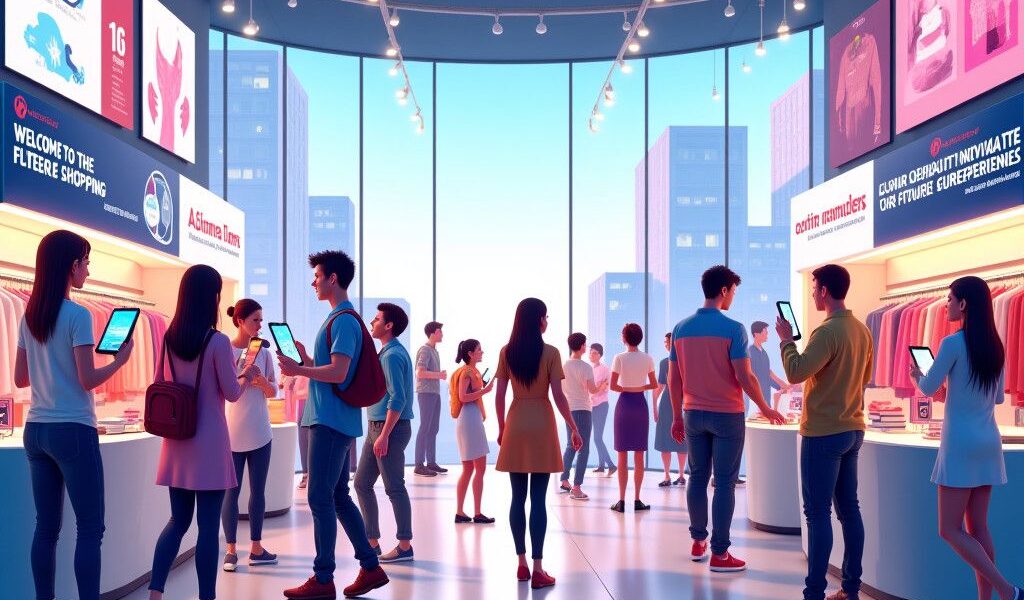As we approach the end of 2024, the retail landscape has undeniably transformed, marked by dynamic strategies and groundbreaking technologies that are redefining the customer experience. The previous year has been especially notable for the resurgence of physical stores, combined with a significant push towards innovative technology. Let’s explore the top news items that captured attention this year, providing insights into the developments shaping the future of retail.
1. Wawa’s Expansion into Ohio
In June 2024, Wawa, the beloved convenience store chain, announced the groundbreaking of its first Ohio location in Cincinnati, set to open in the second quarter of 2025. This expansion is a part of Wawa’s ambitious plan to grow its operations, with projections for 11 stores in Ohio over the next several years. Not only does this move signify Wawa’s confidence in the Ohio market, but it also highlights the growing trend of physical retailers seeking new geographical footprints to reach a wider audience. In a world where online shopping often overshadows brick-and-mortar stores, Wawa represents a commitment to community presence, enhancing customer loyalty through local engagement.
2. Amazon’s Hourly Wage Increase
In a significant move announced in September, Amazon raised the average compensation package for its fulfillment and transportation workers in the U.S. to over $29 per hour — an increase of $3,000 annually for full-time employees. With over 800,000 workers in these roles, this adjustment not only reflects Amazon’s commitment to its workforce but also responds to the broader conversation regarding wage standards in the retail industry. Such initiatives can have a profound impact on employee satisfaction and retention, ultimately affecting customer service levels and the overall shopping experience.
3. CVS Health Restructuring with Target Pharmacies
January brought a strategic shift within CVS Health as the company decided to close several Target pharmacy locations. This decision followed CVS’s acquisition of Target’s pharmacies in 2015, for a deal valued at $1.9 billion. This move raises questions about healthcare strategies within retail and the ongoing challenges faced by traditional pharmacy models. It emphasizes the need for adaptability in an era where consumer preferences for convenience and accessibility are evolving, particularly as the healthcare landscape is reshaped by digital innovation and direct-to-consumer models.
4. Walmart Adopts Invisible Barcode Technology
In a bid to combat rising shoplifting concerns while enhancing the checkout experience, Walmart implemented invisible barcodes on its Great Value branded items in September. This technology allows customers to seamlessly scan items at self-checkout stations, reducing wait times and improving service efficiency. By investing in technological advancements such as these, Walmart underscores the importance of integrating innovation into the shopping experience. This approach not only streamlines operations but also enhances customer satisfaction by providing faster service.
5. Wayfair’s First Physical Store Launch
Wayfair took a significant step into the physical retail space with the opening of its first-ever store in Wilmette, Illinois, in May. This 150,000-square-foot location offers customers a tactile experience, showcasing Wayfair’s extensive home goods selection. CEO Niraj Shah expressed the goal of this store as creating a physical shopping experience that offers distinct advantages over online shopping. The move signifies a larger trend among e-commerce giants recognizing the value of physical presence to complement their online sales platforms, providing customers with an opportunity to experience products before making a purchase.
The Way Forward: Balancing Physical and Digital Retail
The highlights from 2024 suggest a robust future for the retail sector, characterized by a balanced approach that marries physical growth with technological advancements. As consumer behaviors continue to shift towards omnichannel shopping experiences, retailers must remain agile, adapting their strategies to foster customer engagement both online and offline.
In summary, this year has underscored the importance of innovation in both strategy and technology within retail, paving the way for enhanced customer experiences that meet the needs and expectations of modern consumers. The advancements seen in 2024 will likely continue to influence the retail landscape significantly, driving further evolution in how consumers interact with brands and make purchasing decisions.












